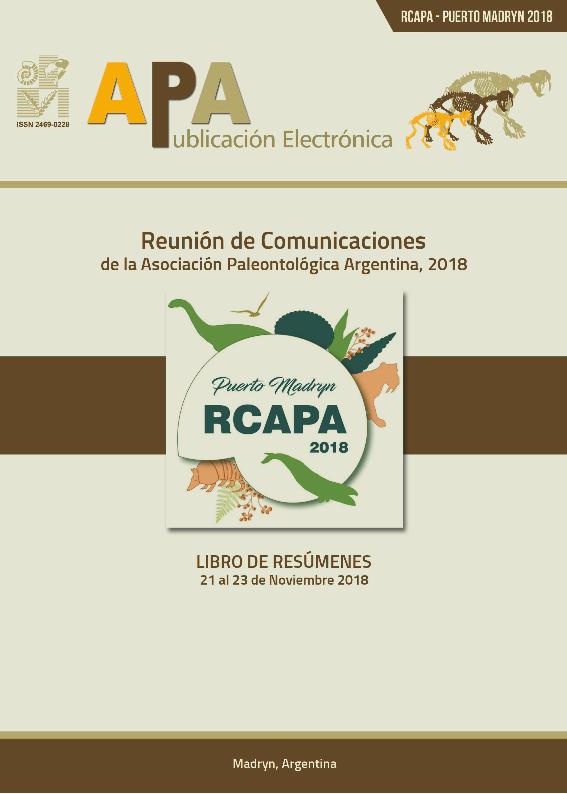Evento
A possible Dicraeosaurid Dental Pattern?
Tipo del evento:
Reunión
Nombre del evento:
Reunión de Comunicaciones de la Asociación Paleontológica Argentina
Fecha del evento:
21/11/2018
Institución Organizadora:
Asociación Paleontológica Argentina;
Título de la revista:
Publicación Electrónica de la Asociación Paleontológica Argentina
Editorial:
Asociación Paleontológica Argentina
ISSN:
2469-0228
Idioma:
Inglés
Clasificación temática:
Resumen
Cranial remains among Dicraeosauridae are scarce, even more considering remains with dental information (i.e., tooth bearing bones). Only Suuwassea Harris, Dicraeosaurus Janensch, and MMCh-PV 75 (from Bajada Colorada Formation, Neuquén, Argentina) preserved toothbearing cranial remains. Within Diplodocoidea, it was proposed that Dicraeosauridae had the condition of an equal functional teeth number between upper and lower jaws, based on Dicraeosaurus remains, which bears 16 alveoli in each jaw (4 in premaxilla, 12 in maxilla, and 16 in dentary). However, considering Suuwassea, the holotype and referred material stands against this proposal, because the upper jaw presents 11 alveoli (4 in premaxilla, 7 in maxilla) whereas the lower jaw bears 9 alveoli, here assumed to be complete in the alveolar count, despite its general incompleteness. MMCh-PV 75 supports the condition stated of an equal tooth number but with a lower count, showing 12 alveoli in each jaw (4 premaxillary and 8 maxillary teeth preserved as an isolated tooth row, and 12 teeth in articulation with the dentary). It has also been proposed an increase in the number of functional teeth within Dicraeosauridae. Suuwassea was recovered as a basal dicraeosaurid, while Dicraeosaurus being more derived. MMCh-PV 75 is recovered in a more derived position than Suuwassea, but more basal than Dicraeosaurus, thus this would support the incrementation in the number of dental elements along dicraeosaurid evolution.
Palabras clave:
DICRAEOSAURID
,
SAUROPOD
,
DENTAL PATTERN
,
CRETACEOUS
,
ARGENTINA
Archivos asociados
Licencia
Identificadores
Colecciones
Eventos(SEDE CENTRAL)
Eventos de SEDE CENTRAL
Eventos de SEDE CENTRAL
Citación
A possible Dicraeosaurid Dental Pattern?; Reunión de Comunicaciones de la Asociación Paleontológica Argentina; Puerto Madryn; Argentina; 2018; 10-10
Compartir




